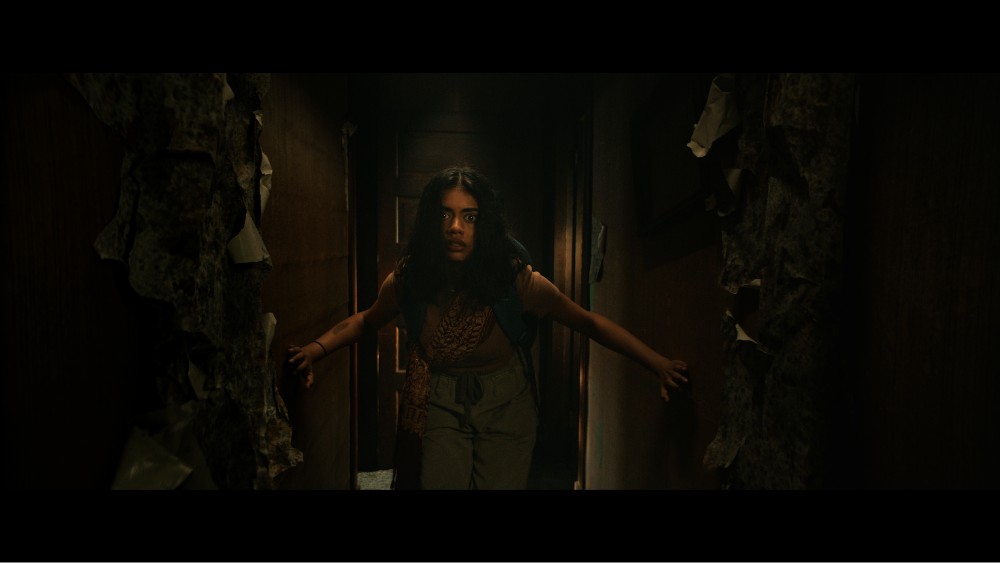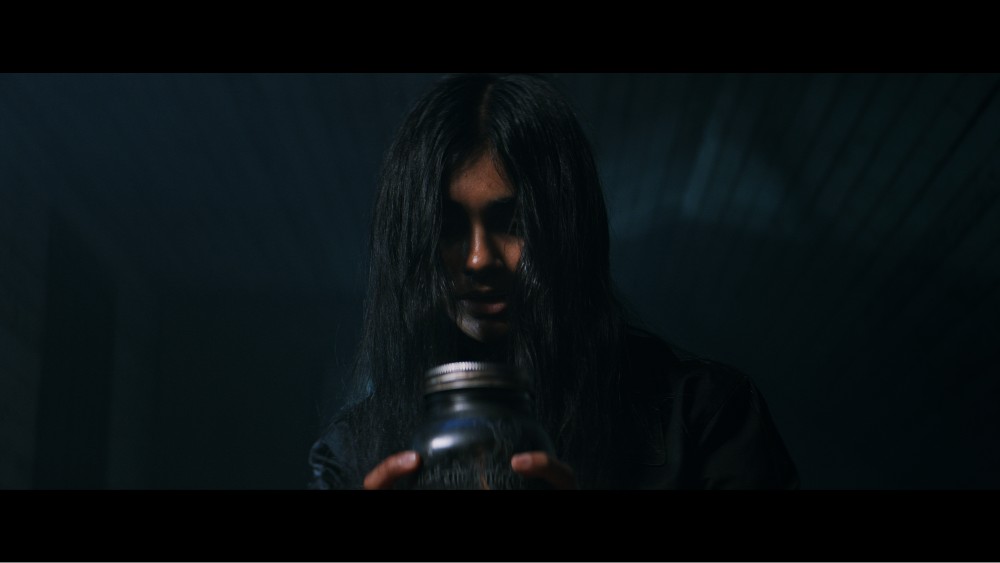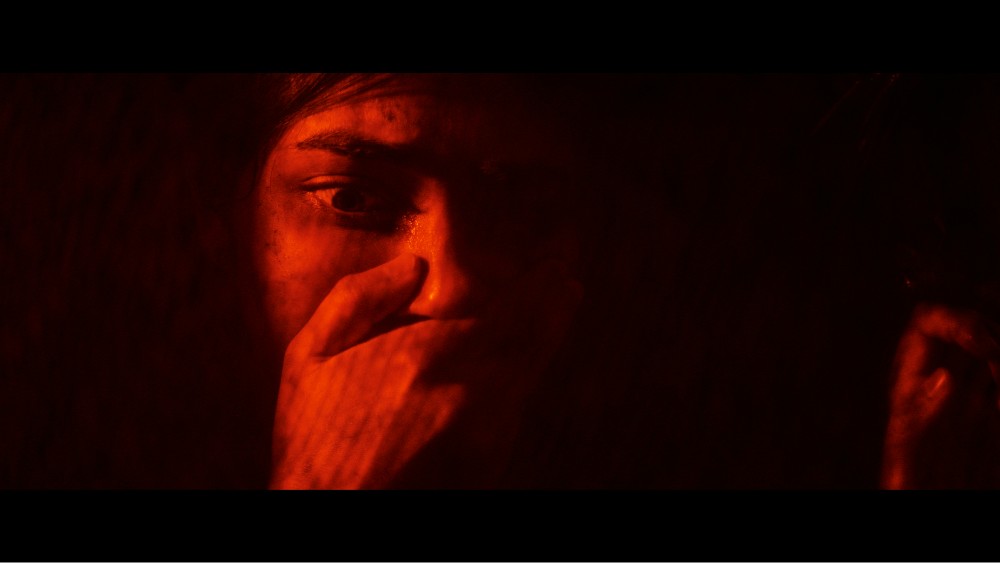
Bishal Dutta’s horror film, It Lives Inside, may not have gotten as much attention in theaters as it probably deserves to have received following its premiere at the SXSW Film Festival earlier this year. Horror fans who have had a chance to see it in theaters are likely to marvel at how sound makes them feel deeply uneasy in the more tense and scarier scenes.
The film’s sound design is the work of Nolan McNaughton, who has been nominated for 17 Leo Awards – awards presented by the British Columbia film and television industry – for his sound work, winning four, as well as receiving a Children’s and Family Emmy for his sound mixing and editing work on Octonauts: The Ring of Fire.
McNaughton actually hasn’t done a ton of sound specifically for horror, but some of the recent genre films for which he’s provided those services include Neill Blomkamp’s Demonic, the mini-series Devil in Ohio, and the series, 7 Demons. That made him the perfect candidate to provide some of the disturbing sounds for Dutta’s horror film, which centers around Megan Suri’s Sam, a teen girl whose childhood friend Tamira (Mohana Krishnan) has been acting strangely, pointing to a dark, supernatural secret that slowly seeps its way into Sam’s own life, hurting and killing those around her.
Below the Line spoke with McNaughton over Zoom a few weeks back, to learn what went into creating the sound of the film’s central creature, the Pishach.

BTL: How did you get involved with this one? Do you usually get involved with movies before production even, or are you generally brought in once they go to post?
McNaughton: This one was in post-production when I came on board. Sometimes, I’ll be involved early on, though. Best-case scenario would be when they’re shooting, but this one we came on in the edit process. It was early though, as far as standard timelines go. They were still in editorial, like a few months out from locking the cut, which was really nice. Bishal and I established a relationship, and started chatting about sound design much earlier than most other productions.
They actually even had me come on board while they’re still in picture editorial, to do some pre-design and come up with some concepts and ideas and build up some sounds that I could shoot over to the picture editor, and that way he or she could use those in their temp guide track, the mix that they’re establishing in the cut.
It was really fun to be able to play around early on and come up with some concepts and ideas that made the process down the line much easier. It’s always important to get good sounds into the editorial phase, because those sounds can sometimes justify the cut. It was amazing to be on as early as I was on this project.
BTL: What were some of your conversations with Bishal like? Were there specific things like the sound of the creature and things like that you knew you’d have to deal with first?
McNaughton: Honestly, I can’t say enough good things about Bishal and working with him in this production. It was one of the most fulfilling, collaborative and creative relationships to be honest in post-production and sound design. He’s a big fan of film sound and how much sound design can do to elevate the story, especially in horror films.
It’s such an important aspect of the filmmaking and storytelling, and he was a big proponent to bringing us on early and having us help elevate the story. He had sent a ton of references and a ton of ideas to us as far as what inspired him movie-wise, what kind of creature sounds he liked in different film, what films he liked in general.
We had a good rapport going in early on, as far as building up the creature goes. He also fostered a relationship between me and Wes [Hughes], the film composer, and put us in touch very early on, so we could discuss tonal elements that he was going to use and tonal elements that I was going to use, so that we weren’t stepping on each other’s feet in the mix process. [We would be] discussing scenes where composition would take the lead or the music would take the lead and scenes where sound design would take the lead and scenes where we’d both be working together, so that everything blended well, and we weren’t all taking up the same frequency range and both sound design and music could be heard at the same time, which is super important.
That kind of relationship doesn’t happen very often. When it does, you get the best film soundtracks, in my opinion, when the composer and the sound designers are on the same board and talking to each other frequently and making sure that we’re all working together to make the best picture possible. That was also super important to this film.

BTL: I’m glad you mentioned that, since there’s such a fine line between the score and sound design in this film where they’re so well blended. Wes is using less melodic score in places that blends directly into the sound design. Are they sending you scenes with his score in place while you’re working on your side of things?
McNaughton: For sure. The entire process, he was sharing his work so far on certain scenes, and I was doing the same. As far as the sound design-ey, tonal elements on my end, he would send me a scene and then I would play around and see if there’s anything I could do to add to it, or just leave it alone. I was well aware of where he was tonally the entire time, so that I could build up my sound design to harmonically mix and match and work well with his stuff, so we weren’t clashing. Dissonance is good in its own way, but I had the option to be dissonant or to be harmonic with whatever he was getting score-wise.
There was a sharing component the entire process, which was amazing, and that was between me and Wes, then also Wes and Bishal, and myself and Bishal. I was sending previews of everything I did throughout the entire process, just little video clips with bounces, and getting feedback from Bishal and molding and shaping the design throughout the entire process, so that when we got to the mix phase, Bishal was very confident. We had already established all of our sound design, and he was happy with it, and I was happy with it.
We went back and forth multiple times and did revisions and whatnot well before the mix, so that when Bishal got to the mix, all he had to focus on was storytelling and the blend of dialogue, music and design, and not particular elements within the design. All that was fleshed out well beforehand.
BTL: The dream sequences are particularly interesting, because in those sequences, the sound design creates all sorts of confusion and discomfort in the viewing. You don’t know what you’re hearing, so how did you put those together?
McNaughton: Good question. Upon first watching something, sounds just come to me in my head, and then, my plan of attack is to try to make those come to life however possible. I’ll watch a sequence and hear it in my head as how I perceive it to sound vocal, and I’ll go about trying to build it out with whatever I can get my hands on, really whatever means necessary to create what I hear in my head.
There are a couple dream sequences where we’re having a slow push into the door down to the basement in the dream sequences, and Bishal had a very specific idea of what that would be. It was meant to be a swarm of people in agony in this hellfire in the basement. For that particular sequence, Bishal had a very established idea in his head that I was trying to build out and recreate.
There were a lot of screams that ended dream sequences or began dream sequences, where I would use scream-like textures and tones that were distorted and trippy to bridge the gap between scream and sound design, so they all just blended into one. Wes was doing the same thing, so it was production sound with the scream, plus some trippy sound design that sounded shriek or scream-like, and Wes’ score all kind of converging into one.

BTL: The sound of the Pishach is used throughout the film even before we see it for the first time, previewing the creature’s existence. Where do you even start with those?
McNaughton: I guess I could start with in pre-design. Bishal had me come on early before they locked the cut, and there were specific things we wanted to accomplish with that and certain emotions that we knew we’re going to have to convey with the creature. There were multiple things, but one would be maybe its sonic sound signature when it’s invisible, when we don’t see it. What’s that sound going to be? How are we going to establish that it’s there, but we don’t see it? That was one of them, and for that particular sound, that use of the stomach growl that were pitched way, way, way down, what were kind of trippy undulating sounds and its wheezy breathing, maybe an attack sound or defense sound, or its pain sound, or its taunting, or laughing almost.
Those are all things that we knew we had to try to tackle, and I kind of had complete creative freedom to just come up with whatever I thought sounded cool with some still images of the creature and an unlocked cut. I had an idea of what it looked like, but I wasn’t cutting to sync. It was just me kind of playing around and building out a big library and palette of sounds.
Those sounds were given to editorial, and then they were able to use them in the editing process, which may have justified some of the cut decisions as well. Once we locked the cut, it was just me going in and taking the sounds that Bishal liked, and just expanding them to be bigger and more fat.
The three main components or four main components of the creature, Bishal wanted there to be a grounding human element to the creature for its breathing and its taunting, and the idea that it was a soul eater that has souls trapped in its body, within itself. The creature also had an animalistic aspect to it, for the brutality of it and its aggressive and attacking moments. He also wanted it to feel like it was taunting and playing with this prey, almost laughing at them, and he wanted its walk to be very off-kilter and unsettling. He didn’t want it to be a very steady walk.
The three main aspects of the creature’s vocals itself were this trapped soul whisper swarm and souls wailing, almost like an insect swarm in nature is the idea we were playing with. And then, the second aspect was the animalistic aspects of using animal recording and other recordings to build out its animal vocalizations with weird animals in there. The third aspect, we had a vocal performance by a guy named Brian Dobson. He went through and provided me a library of human vocalizations, various types that I processed, and manipulated and blended them with animal recording in creation of the creature. It’s kind of those three aspects that built out its vocal performance, and then its physicality with its walking and body movements, bony cracking and crunching and wetness.
BTL: I have to go speak with Todd Masters, who created the visuals for what you just described. Quickly, before I let you go, I saw that you did sound design for Joy Ride, too, and I’m afraid to ask what kind of sounds you created for that movie.
McNaughton: I mean, there’s one shot in there that I think we all know is the most shocking. [laughs] I built it out to be much more than what ended up in the movie, so I made it a lot grosser than what landed, which was probably good. Maybe it would have shocked audiences even more, but yeah, that was a very fun movie.
It Lives Inside is still playing in theaters nationwide. You can also read our earlier interview with creature and prosthetic make-up designer Todd Masters right here.





